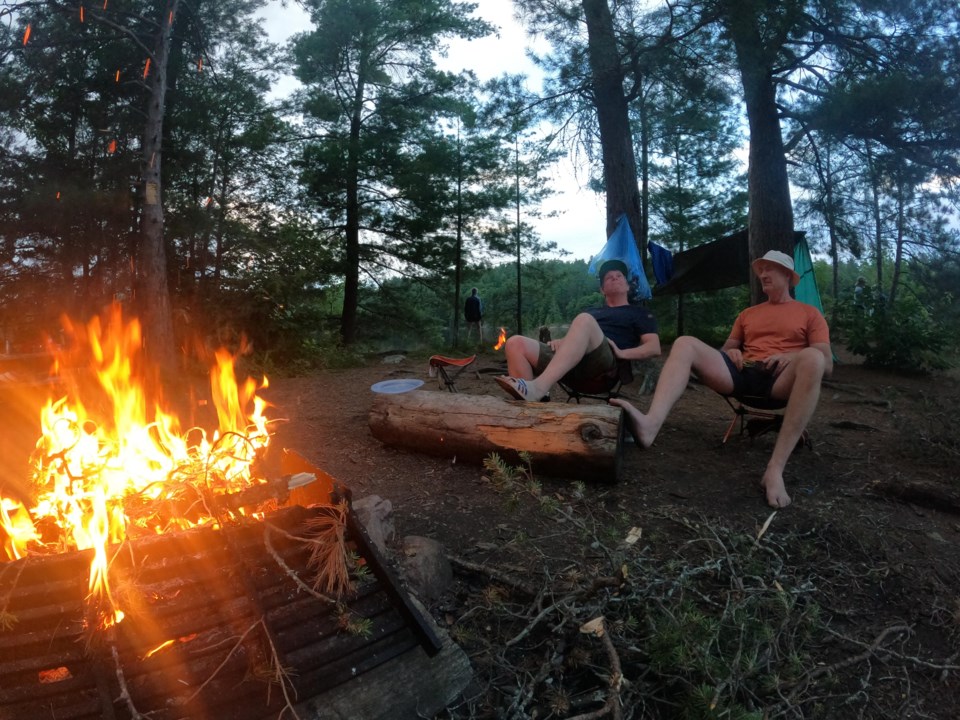I’ve been working with students from the school board in our Survival Skills program, where students Grades 4 to 12 are put into educational mock scenarios to learn about some tricks of the woods. Then we exercise the new-found survival knowledge with a local context.
I’ll often frame the day by telling the students to put on their imaginary hats, and ask them to wonder what would happen if the bus forgot to pick them up from their school trip. You have to survive one night alone in our woods with just flint and steel. What would you do? In this example situation, going down the escarpment to hitchhike or get some McDonald’s is out of bounds.
Once we complete building a storm shelter composed of natural materials, we move on to the necessity of fire. We discuss how fire was controlled by bipedal beings somewhere between 200,000 to 500,000 years ago. It would take a little longer after that, perhaps 40,000 to 130,000 years ago during the age of the Neanderthal, to intentionally create the fire from scratch. Since those ancient milestones, fire has been used for a plethora of social and industrial reasons beyond count.
From a survival standpoint, the students and I will discuss the importance of heat, lighting, cooking food, boiling water, fending off predators, and creating rescue smoke signals. We then challenge the students to use flint and steel, one of the more primitive fire starting methods which may date back nearly as far as Neanderthal times. The literature is up for debate as to when exactly which species of upright ape was the first to strike rocks together to create sparks.
Sometimes I get gifted with a chuckle as I watch young students finally catch the supplied lint and toilet paper on fire. Some shriek, get a little freaked out, or even celebrate and cheer passionately. When I see this, I rewind time to ages before, when a bunch of hairy, ape-like animals would have had similar reactions. Joyous as this is, fire was a tool of power and shaping the landscape in historical times.
For example, fire was used by Indigenous Australians up to 65,000 years ago to hunt, as it funnelled terrestrial animals into the kill zone and forced four-legged meals into (or out of) ground burrows. There are also ancient practices of landscaping where land was cleared to create pathways and more open spaces devoid of vegetation.
Nowadays, right here in Niagara-on-the-Lake, we occasionally use fires to purposely burn off invasive species and plant new ones in areas along the Niagara Parkway. All the while, a nearby neighbour sits by a flame in the backyard to socialize with friends over a cold one.
My case in point is that fire has a rich history as the closest non-living thing to a living thing we know. It breathes, as it requires oxygen. It needs to consume fuel for energy. It grows, and to quote one of my firefighting pals, “it wants to grow.” It leaves waste, and it even seemingly reproduces itself and spreads. However, it is not made of cells that divide and function like other true living things.
But it’s pretty close, so no wonder we have always had a substantial relationship with the ubiquitous flame. Hopefully, the students (who all survived) will never look at a backyard fire the same way again.
